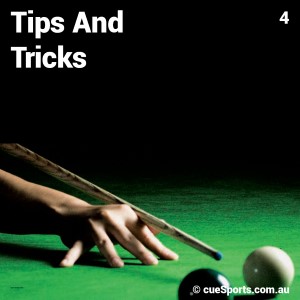Compilation of advises, tips and tricks from my experience with others
Throughout my time playing snooker, I’ve been trying to constantly improve my game my way and seriously, my way was taking me to Timbuktu via Holland. My brother is actually quite a snooker player himself but I was not given many lessons from him until later when I seriously wanted to play the game. Throughout the years, I’ve met many good players, and here’s a compilation of advice they gave to me.
Buying your first cue Ash or Maple
Lucky I was when I was 18 that I was given a cue by my brother’s friend on my birthday in One Snooker Club(thanks Darren!) and boy do I still remember vividly how that day went. My first cue and it was the legendary Cityboy. The cue is still in production but under the CM1 brand now and somehow it’s not like the first batch of City boys. Man, how I missed that cue! It warped due to my little knowledge of caring for a cue but I’ll touch on that later.
So some of you now might be interested in getting a cue, let me share my experience with you.
My conversation with my brother, Alvin Chin, taught me that a snooker cue is made out of 4 splices of wood and a pool cue is made out of 10 splices hence the higher price in pool cues. Snooker cues are usually made out of ash or maple wood whilst the lower end cues can be made out of other woods like rosewood and ebony. In general, ash wood has a very visible grain and maple wood’s grain is very fine. According to an article by Maximumbreak.com, ash wood tends to be stiffer than maple wood cues and some players prefer maple cues as the end is whippier than ash.
Cue No.1-3 is maple but the more widely found ones are like No.1 whilst cue no.7 is ash wood. Taken from users.skynet.be/billard.billiards/shaft5.jpg
But trust me when I say, you’ll have to play with the cue to really know the difference. I advise anyone who wants to buy a cue to go to a place where you’ll be able to test out the cue and preferably a place with a full-size snooker table (i.e.Snooker Arena.Amcorp Mall) so you can try a soft, medium and power strength shot to feel the cue for yourself.
Cue Length
A cue, in general, should be 57-58’ long but due to the difference of arms length and body height, a good length of the cue would be one that reaches +-1’ of your shoulder. Steve Davis plays with a cue 57’, if I’m not wrong when he should be playing one that should be 0.5’ longer. I would like to think a cue’s power can only be tested properly when the cue is being held properly and that would be no more than 3’ from the end of the butt ( NOTE: Don’t take this as a way to hold the cue for every shot as its only meant for testing purposes).
Cue Weight
Snooker cues, be it ash or maple, can weigh anywhere from 17oz to 21oz. Different players have different preferences for the weight of the cue so be sure to choose one weight that you feel most comfortable with. Heavy cues can be quite tiring for budding players but the longer you play with it; you’ll soon develop a ??feel” for the weight and cue that no one will. Moreover, not all cues have the same weight balance. Some cues are heavier at the front, some at the back, and some are pretty well balanced. Currently, I am using a JP and I find it heavier at the front compared to my previous cue, an O’ min. After months of finding the ??feel”, I finally got it.
Cue Tips
Most cues would have a tip size of between 9.5 to 10mm and dome-shaped but I’ve seen many people play with flat-headed cue tips and very roundly-shaped cue tips. For beginners, I reckon it best to start off with a cue tip that is dome-shaped. There are also compressed cue tips and normal cue tips. Most cue tips that we buy are not compressed. Cue tips are usually made out of leather in layers and by compressing them together for a period of time, a cue tip would generally be harder and thus giving additional power to your shot over the cue’s power. However, a compressed cue tip that is too hard can result in miscues when taking shots with a lot of spin and side.
Truth be told, no one can just pick up a cue and play immediately with it. Most, if not all, professional players we see have over the years compensated for their cue’s faults. Steve Davis and John Parrot tried Stephen Hendry’s old PowerGlide once and they totally couldn’t play with it.
To 1-Piece or to 2-piece
I find this topic the most controversial one as many players can sit for hours arguing the ??feel” of a 1-piece compared to a 2-piece cue. As you can see, there are many pros using both 1-piece (John Higgins) and also 2-piece (Mark Selby). In the end, it is just how comfortable you are with the cue.
Trivial Fact: The ? cue was made popular by Steve Davis when his cue was damaged and he brought it to John Parris. It was unsalvageable and Steve gave JP the go-ahead to cut the cue and the rest was history. ? cues were already made available then but weren’t as popular as the ? cues.
Cue Maintenance
It is wise for everyone owning a cue to buy a piece of lint-free cloth for their cue. Generally, the cloth that is used for car wash would be sufficient. A cue should be wiped during play when it feels dirty or sticky and also again thoroughly wiped after play. Particular attention needs to be paid to the ferrule area. A cue that is not thoroughly clean would have chalk stain, especially around the ferrule area. The chalk can actually dry up the wood and cause it to be brittle. For when it needs, a damp cloth can be used to wipe the cue but must be buffed immediately with a dry cloth.
Linseed oil should be applied every 3-6 months to treat the cue and NEVER sandpaper the cue. This would remove the protective sealer and at the same time make it visually unappealing at soon the wood would soon have a grey tinged over it. It’s also wise to keep your cue in a rigid box so that it maintains its straightness. A Haliburton-looking aluminum box can set you back anywhere from RM100 and above.

